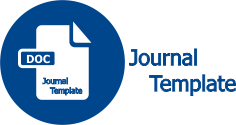Model Pembelajaran PBL Dipadu Strategi NHT Untuk Memotivasi dan Meningkatkan Hasil Belajar Peserta Didik
(1) Universitas Riau
(2) Universitas Riau
(3) Universitas Riau
(*) Corresponding Author
DOI: https://doi.org/10.26858/cer.v3i2.13315
Abstract
Keywords
Full Text:
PDFReferences
Copriady, J. 2014. Penerapan SPBM yang Diintegrasikan dengan Program eXe Learning terhadap Motivasi Hasil Belajar Mahasiswa pada Mata Kuliah Kimia Dasar. Jurnal Pendidikan, (5), 95-105.
Depdiknas. 2008. Pengembangan Bahan Ajar. Direktorat Pembinaan Sekolah Menengah Atas Direktorat Jenderal Manajemen Pendidikan Dasar dan Menengah Departemen Pendidikan Nasional. Jakarta.
Ibrahim, M. 2002. Pengajaran Berdasarkan Masalah. Surabaya: UNESSA Press.
Lie, A. 2010. Cooperative Learning, Memperaktekkan Cooperative Learning di Ruang-ruang Kelas. Jakarta: Grasindo.
Robert E. Slavin. 2010. Cooperative Learning (Teori, Riset, dan Praktik). Nusa Media. Bandung.
Rusman. 2012. Model-Model Pembelajaran: Mengembangkan Profesionalisme Guru. Rajawali Pers. Jakarta.
Sardiman, A. M. 2010. Interaksi dan Motivasi Belajar Mengajar. Rajawali Pers. Jakarta.
Sari, N. P. 2017. Pengaruh Penerapan Model Pembelajaran Problem Based Learning Dipadu Numbered Heads Together terhadap Keterampilan Metakognitif dan Kemampuan Berpikir Kritis Geografi Siswa SMA. Jurnal pendidikan, 2(3), 440-447.
Trianto. 2012. Model-model Pembelajaran Inovatif Berorientasi Konstruktivistik. Prestasi Pustaka. Jakarta.
Warsono dan Hariyanto. 2012. Pembelajaran Aktif. Remaja Rosdakarya. Bandung.
Yokhabet, S. S., & Sunarno W. 2012. Pembelajaran Biologi Menggunakan Model Pembelajaran Berbasis Masalah dengan Keterampilan Proses Sains Untuk Meningkatkan Motivasi Belajar dan Hasil Belajar. Jurnal inkuiri, 1(3), 183-184.
Article Metrics
Abstract view : 474 times | PDF view : 77 timesRefbacks
- There are currently no refbacks.
Jurnal dipublikasikan oleh: Program Studi Pendidikan Kimia
Program Pascasarjana Universitas Negeri Makassar
Alamat JL. Bonto Langkasa Gunung Sari Makassar, 90222
Kampus PPs UNM Makassar Gedung AD ruang 406 Lt 4, Indonesia.Phone 082393643737/085145825311/085242228678
CER UNM Indexed by:

Chemistry Education Review (CER) is licensed under a Creative Commons Attribution-NonCommercial 4.0 International License.










